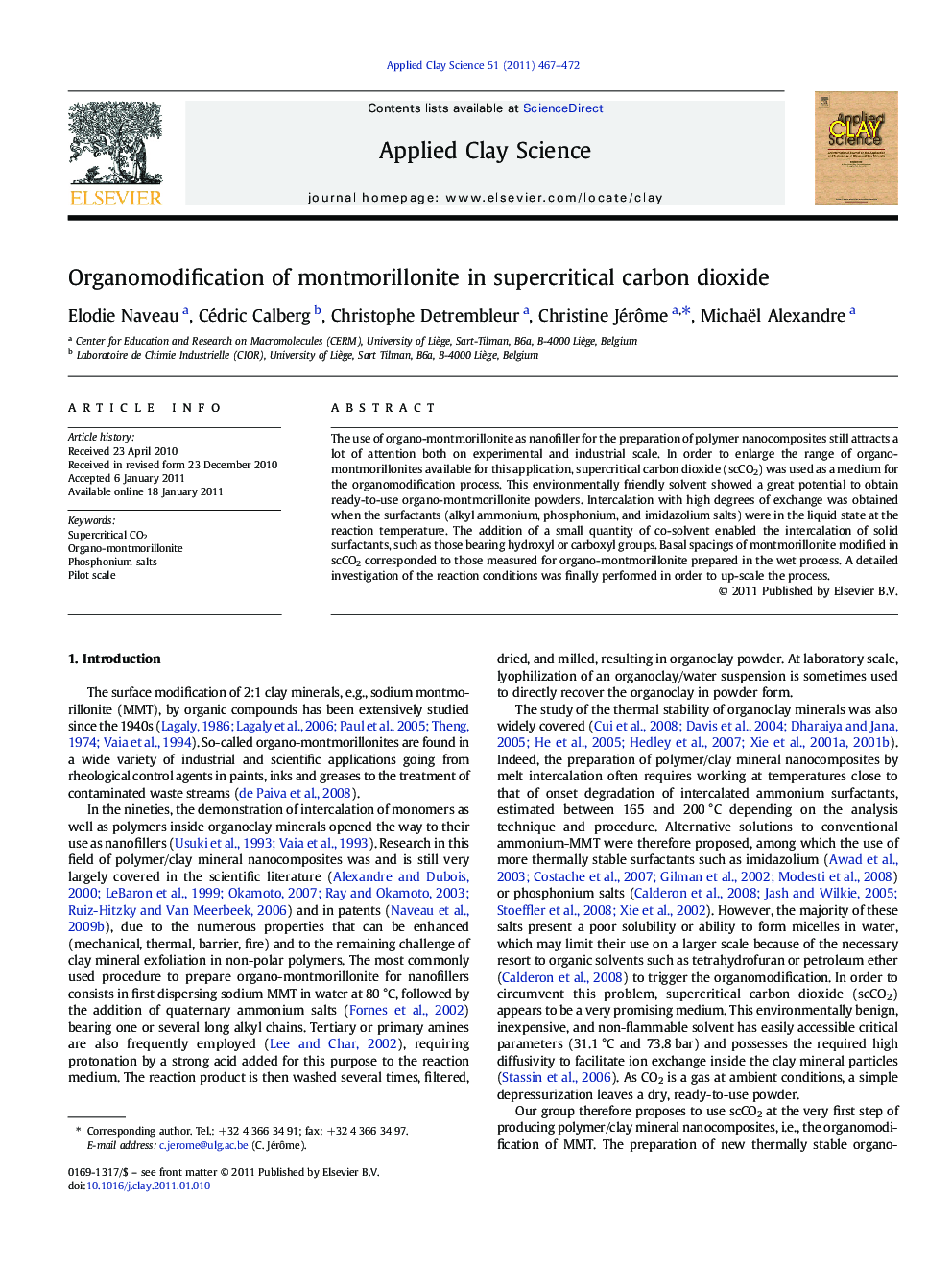| Article ID | Journal | Published Year | Pages | File Type |
|---|---|---|---|---|
| 1695599 | Applied Clay Science | 2011 | 6 Pages |
The use of organo-montmorillonite as nanofiller for the preparation of polymer nanocomposites still attracts a lot of attention both on experimental and industrial scale. In order to enlarge the range of organo-montmorillonites available for this application, supercritical carbon dioxide (scCO2) was used as a medium for the organomodification process. This environmentally friendly solvent showed a great potential to obtain ready-to-use organo-montmorillonite powders. Intercalation with high degrees of exchange was obtained when the surfactants (alkyl ammonium, phosphonium, and imidazolium salts) were in the liquid state at the reaction temperature. The addition of a small quantity of co-solvent enabled the intercalation of solid surfactants, such as those bearing hydroxyl or carboxyl groups. Basal spacings of montmorillonite modified in scCO2 corresponded to those measured for organo-montmorillonite prepared in the wet process. A detailed investigation of the reaction conditions was finally performed in order to up-scale the process.
Research Highlights► Montmorillonite is organomodified in supercritical CO2 with ammonium, phosphonium, and imidazolium salts. ► Organomodification only proceeds when the onium salts are molten or in solution. ► Ethanol is an efficient co-solvent for onium characterized by high melting point. ► Optimal organomodification is function of onium and clay concentration as well as clay water content.
